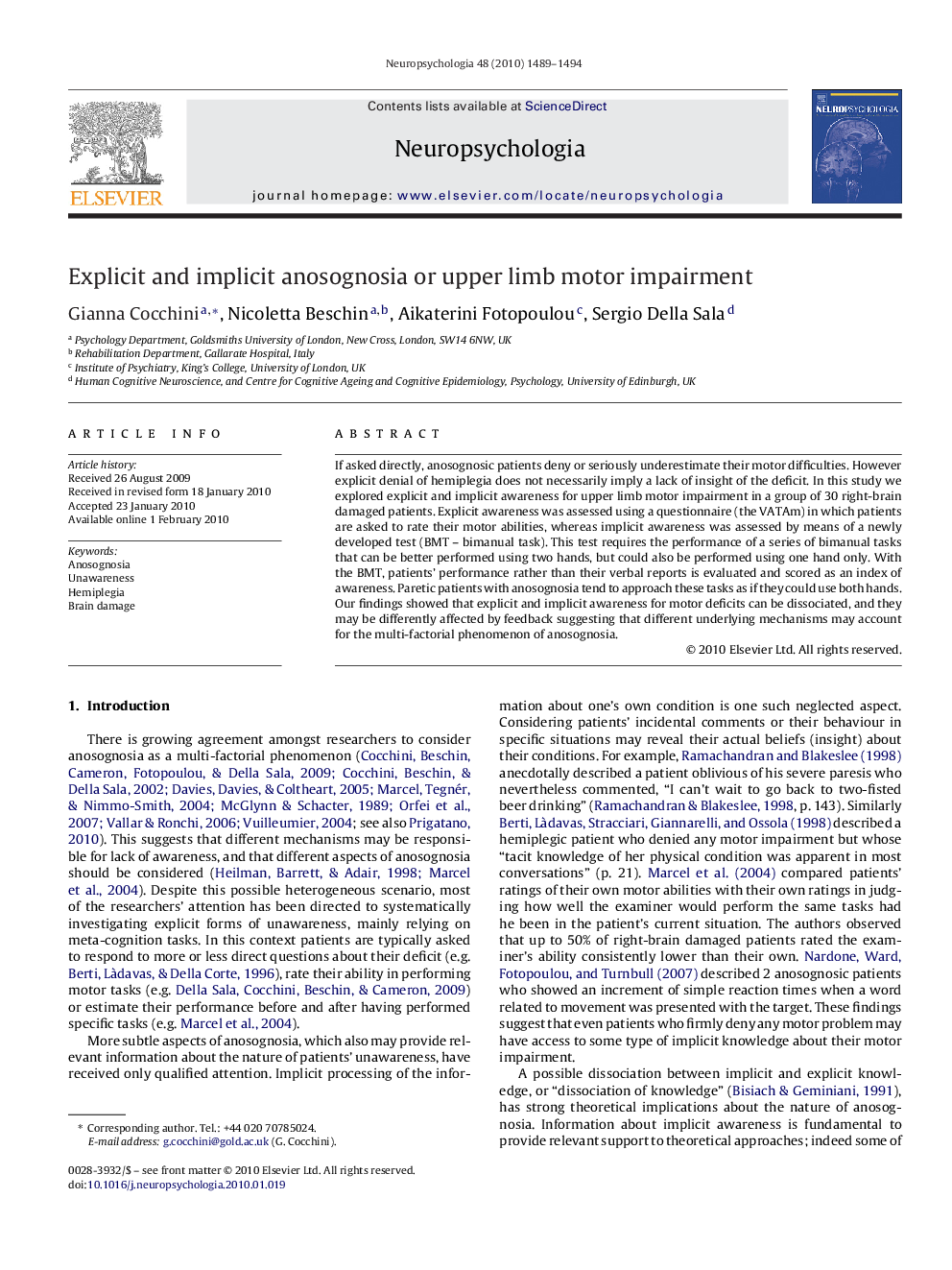| Article ID | Journal | Published Year | Pages | File Type |
|---|---|---|---|---|
| 10466143 | Neuropsychologia | 2010 | 6 Pages |
Abstract
If asked directly, anosognosic patients deny or seriously underestimate their motor difficulties. However explicit denial of hemiplegia does not necessarily imply a lack of insight of the deficit. In this study we explored explicit and implicit awareness for upper limb motor impairment in a group of 30 right-brain damaged patients. Explicit awareness was assessed using a questionnaire (the VATAm) in which patients are asked to rate their motor abilities, whereas implicit awareness was assessed by means of a newly developed test (BMT - bimanual task). This test requires the performance of a series of bimanual tasks that can be better performed using two hands, but could also be performed using one hand only. With the BMT, patients' performance rather than their verbal reports is evaluated and scored as an index of awareness. Paretic patients with anosognosia tend to approach these tasks as if they could use both hands. Our findings showed that explicit and implicit awareness for motor deficits can be dissociated, and they may be differently affected by feedback suggesting that different underlying mechanisms may account for the multi-factorial phenomenon of anosognosia.
Related Topics
Life Sciences
Neuroscience
Behavioral Neuroscience
Authors
Gianna Cocchini, Nicoletta Beschin, Aikaterini Fotopoulou, Sergio Della Sala,
